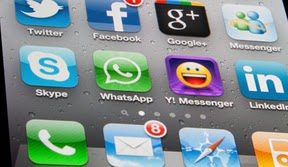Organizations are harnessing the smartest smartphones, handheld PCs, tablets, the iPad, netbooks, as well as devices such as the iPod touch to deliver mobile learning applications.
“This is a resurgence and change in something that’s been proven for many years to work — electronic performance support,” said David Metcalf, director of the Mixed Emerging Technology Integration Lab at the University of Central Florida’s Institute for Simulation and Training. “Apps are enabling that in new and creative ways to have just-in-time learning right at an employee’s fingertips.”
Productivity is enhanced since apps work offline, while mobile sites don’t. It’s also more convenient — especially when users want to view PDFs or other downloads — since not all employees have online access. Ease of use offered by mobile devices supports lifelong learning, and because devices are integrated into everyday life, they facilitate authentic learning.
For example, to better inform associates at home improvement store Lowe’s about the various plants in the garden center, the organization’s learning and development team decided to build a mobile application for the iOS platform, Apple’s mobile operating system. Lowe’s saw this as vital to achieve a priority mission around customer service, loyal well-trained employees and the associated business benefits.
Lowe’s self-produced a mobile application and devised a strategy to link real-world mobile tools with a virtual store environment and associated learning games and simulations. For instance, each plant has a quick response code that can trigger just-in-time content or a direct link to a component of the virtual store. Using this app, associates have information on demand about plant details region by region as well as care and pest prevention techniques to better serve customers.
Similarly, MINI, a small car made by auto manufacturer BMW, commissioned an iPad app for a learning event at the Hyatt Regency Lost Pines Resort and Spa, where MINI sales associates were invited to learn about the MINI Cooper Countryman. The sales team can use it to prepare for a pitch, and potential customers who wish to learn more about a product can take it with them on a test drive.
“While most examples focus on Apple applications, since they were the first to gain traction in this arena, there’s been a huge boom that has spawned the growth of other markets such as Android and BlackBerry,” Metcalf said. “This free-market economy will produce a much more open and broad-reaching effect.”
For instance, applications such as SuperNutrition, a result of first lady Michelle Obama’s Apps for Healthy Kids competition, work on iPhone, Android, BlackBerry or any Web-capable device with a full browser.
Although children may not be doing the household shopping or cooking their own meals yet, they may be able to help impact their parents’ choices, and healthy habits ingrained early are more likely to persist during adulthood. To use this application, children sign up for a free account on the system and personalize their own avatar via phone or computer. Each avatar has basic statistics including strength, agility, speed, wellness and energy. Characters travel through different game areas, each with several missions their characters must complete.
“The cloud is the next generation of what the Web used to be,” Metcalf said. “Apps plus the cloud is going to equal something more powerful and stronger than we’ve seen before.”















